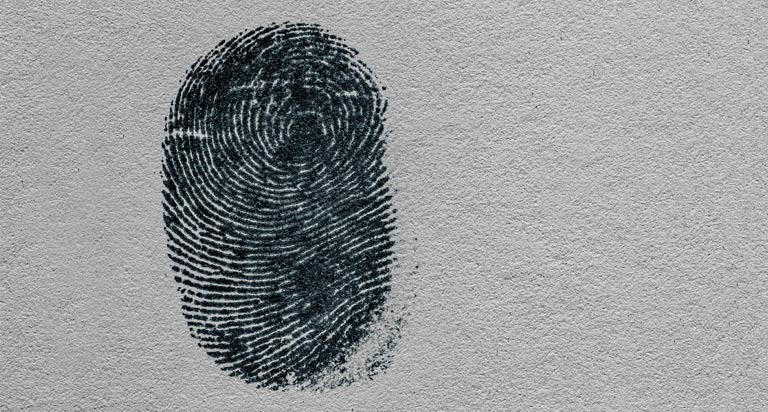What Is Synthetic Identity Theft?


Highlights:
- Synthetic identity theft is a form of financial fraud in which a real person’s information, such as their Social Security number or date of birth, is stolen and combined with other falsified personal information to create a new identity.
- Synthetic identity theft can be difficult to detect with traditional fraud monitoring systems.
- If suspicious activity on your credit reports leads you to believe that your identity has been stolen, visit IdentityTheft.gov to report the crime.
Synthetic identity theft may sound like a plot point from the next sci-fi blockbuster. Unfortunately, it's not fiction at all — it’s a serious threat to your financial health.
What is synthetic identity theft?
Synthetic identity theft is a special form of fraud in which a real person’s Social Security number (SSN) is stolen and then a name, date of birth, mailing address, email account and phone number are made up and applied to that legitimate SSN to create a new identity.
Synthetic identity theft can be difficult to detect with traditional fraud monitoring systems. Its most common victims are children, the elderly and homeless individuals. These populations may be less likely to use credit or monitor their credit history.
How does a synthetic identity get created?
There are several ways criminals can create a synthetic identity. A fraudster may seek out a person’s SSN either by stealing it themselves or purchasing a stolen SSN from the dark web. The legitimate SSN is then combined with invented personally identifiable information in a process called identity compilation.
The fraudster may also steal a real person’s personally identifiable information, alter it slightly and attempt to pass it off as a new person in a technique known as identity manipulation.
Finally, they may use a method called identity fabrication to create a totally false identity using bogus personally identifiable information.
What is a synthetic identity used for?
As you may suspect, synthetic identities are often used to commit financial fraud. Identity thieves can use synthetic identities to apply for and obtain various loans, bank accounts, credit cards and more. They may file tax returns, obtain medical care or apply for unemployment benefits, all using a fake identity.
Synthetic identity theft can be a long-term process that involves carefully constructing a new identity over time. It can sometimes take years to compile a full and believable synthetic profile, a long credit history and suitable credit scores.
Synthetic identities offer thieves many avenues through which to commit fraud. For example, a well-organized crime ring can use false accounts associated with synthetic identities to access or store funds obtained illegally. A fraudster may use a synthetic identity to take out a personal loan, default on repayment and walk away with the money. Or a criminal evading prosecution might obtain a synthetic identity to hide from authorities.
What happens if you’re the victim of synthetic identity theft?
One of the biggest problems with synthetic identity theft is detection. Because the identities created by fraudsters often look legitimate, most lenders and banks have difficulty flagging these accounts as suspicious. Thieves also target people who don’t access their credit accounts often, making timely identification of the problem less likely.
Use of your SSN by a fraudster to commit synthetic identity theft may result in what’s known as a split or fragmented credit file. Fragmented credit files happen when information from another person — in this case, a synthetic identity created using your SSN — is attached to your credit history. Negative judgments from late payments and defaulted loans originating from a synthetic identity can seriously harm your credit scores, and legitimate information on your credit reports can be difficult and time-consuming to separate.
As with any kind of identity theft, if someone steals your personally identifiable information, you become vulnerable to other kinds of fraud, too. For example, your SSN may be available for purchase on the dark web, making you a prime target for criminals who want to steal money or cause damage to your credit history.
How to help protect against synthetic identity fraud
Fortunately, you can take action to help stop synthetic identity theft before it starts.
- Secure your SSN. Avoiding synthetic identity theft is all about protecting your personally identifiable information, especially your SSN. Keep your Social Security card at home in a safe place, and don’t repeat your SSN aloud within earshot of others. Shred or black out any documents that include personally identifiable information, such as bank statements, tax forms and government notices.
- Use digital security software. Don’t leave your personal information and passwords vulnerable to hackers and malware. Consider a comprehensive suite of protective digital security software for maximum protection.
- Know the signs of phishing scams. Some victims of identity theft knowingly provide sensitive information under false pretenses. Be on the lookout for phishing scams, which use emails, texts and phone calls that claim to come from a legitimate source to steal personally identifiable information. Be wary of any unexpected communications from a government agency, a bank or any other financial organization that lack specific information, such as your name and account number. Check the phone number or email address carefully for misspellings or character substitutions. And never click any hyperlinks, as these may install malicious software that can access information saved on your device and record your keystrokes.
- Review your credit reports and monitor your credit scores. Regularly take a careful look at your credit reports and keep tabs on your credit scores. If you notice any incorrect or unfamiliar information on one of your credit reports or if your credit scores drop unexpectedly, you may be a victim of synthetic identity theft or another type of financial fraud. You can also place a fraud alert on your credit reports, which will encourage creditors to notify you if someone tries to open a credit account in your name. As an additional precaution, you can place a security freeze on your credit reports so that new credit accounts cannot be opened in your name.
You can receive free Equifax® credit reports with a free myEquifax account. Sign up and look for “Equifax Credit Report” on your myEquifax dashboard. You can also get free credit reports from the three nationwide credit reporting agencies at AnnualCreditReport.com.
If suspicious activity on your credit reports leads you to believe that your identity has been stolen, visit IdentityTheft.gov to report the crime.

Sign up for a credit monitoring & ID theft protection product today!
For $19.95 per month, you can know where you stand with access to your 3-bureau credit report. Sign up for Equifax CompleteTM Premier today!



